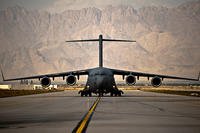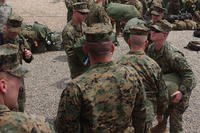By Lizann Lightfoot, MilitaryOneClick.com
In early March, our military base’s elementary school ran out of paper. There are still three months left in the school year, but the teachers had no paper to print out homework, classroom activities or tests. The school was waiting for a final shipment to arrive, but the budget did not allow for any more paper to be purchased for the school year.
The teachers’ solution? Stop printing homework.
One teacher sent home a note stating that since “85 percent of the class was performing at or above grade level, homework is not necessary for the remainder of the school year.” The note allowed parents to vote on whether or not their children should continue to do written homework like math problems and reading comprehension questions.
Not only does this mean that the teacher was fine with 15 percent of her class falling short for the year, it also indicates that the school grossly miscalculated their paper needs. The entire school considered dropping homework because of the paper shortage. Elementary students said they were spending most of the day playing computer games because there was no paper to practice writing and math problems.
Our school isn’t the only one with severe budget issues. Military base schools suffer from low public school budgets nationwide.
Schools on military bases are often managed by the local public school district, so they rely on the public school budget for supplies and maintenance. The military base school described above is one of many schools across the country that has to ration paper and photocopies. Sometimes copier limits are determined by printer rental agreements; however, limitations on paper are strictly because of low budgets and it is common for schools to run out of funding for supplies, especially toward the end of the year:
- In 36 out of 50 states, annual budgets for public schools have decreased dramatically since 2008. Even though enrollment has increased slightly, many schools are required to spend less now than they did nine years ago.
- Public schools in Philadelphia, Pennsylvania run out of paper so regularly that there are annual paper drives from organizations dedicated to raising funds for inner-city schools.
- The Lawton Public School District near Ft. Sill, Oklahoma only holds classes four days a week toward the end of the year, partly because of budget shortages. Their total instruction days for the year are only 167, even though state requirements are 180 days. Four-day weeks are also a common solution in Arizona.
- Public schools near Ft. Carson, Colorado, are facing budget cuts that may close several area schools.
- Although the national average spent per student is $11,845, the public school district around Camp Pendleton, California spends only $8,690 per student, which includes teacher salaries and property maintenance. The budget is similar in the district adjacent to MCAS Cherry Point, North Carolina. At Ft. Hood, Texas, the average is slightly lower. Around Luke Air Force Base, Arizona, schools spend only $6,600 per student. You can check your school district budget on the interactive map here.
Other military base schools are federally funded by the Department of Defense Education Activity (DoDEA). They manage schools at international military bases, as well as 12 bases in the continental US.
Why are DoD schools running out of paper and supplies?
- The DoD budget for Printing and Reproduction has remained unchanged for the past three years: $1,156,000 for 133,000 students. That is a printing budget of only $8.69 per student per year or around $217 per classroom of 25 students. The allocated budget must cover paper, ink and staples.
- DoD school budgets are allocated as tightly as possible and a majority of funds are funneled into maintenance or repair costs. About half of the DoD’s 175 schools are 50 years old. A study conducted in 2011 found that 75% of DoD schools were beyond repair or would require “extensive renovation to reach minimum standards.”
- Making the necessary repairs to bring all DoD schools up to minimum standards would amount to $4 billion. For the past three years, the allocated budget has averaged just over $100 million per year.
- The 2011 study made a priority list of which schools needed the most funding. However, the 2017 DoD budget acknowledges that not all schools on the list ever received necessary funds. The budget asks the Secretary of Defense to “conduct an updated assessment and create a new list.”
Teachers at base schools are instructed to plan ahead so they don’t exceed their paper allowance. If they run out, they have two choices: Buy paper themselves or ask the parents to donate.
In our case, the parents were happy to help. Within a day, many parents had purchased a ream of paper and brought it to the school. Word spread quickly among the base community. Many people who had no children of their own made a trip to the office supply store to buy paper for the base school. It was a tidal wave of support for an underfunded school. By the end of the week, the school reported that they now had enough paper to complete the school year!
Such a supportive community makes a difference in education. Not all underfunded schools receive such an outpouring of support from local communities. Parent involvement is one of the reasons that military children at DoD schools continually perform well, despite budget obstacles. Some DoD schools have test scores ranked near the top of their state. Although military families have low incomes, high minority rates and often only a high school diploma for parents, DoD schools have relatively few discipline problems and some of the highest test scores in the nation for minority students. Parents should continue to stay involved and assist with school needs whether their base school is publicly or DoD funded.
More from MilitaryOneClick:









